Episode #303- Pollinators in Bloom
Episode #303- Pollinators in Bloom
Today on Life In Bloom we’re all about pollinators and pollination. Bees, Birds, Hummingbirds, Butterflies, Dragonflies, even Bats – all have critical functions that contribute to growing flowers and food. We’ll learn what Pollinators do and discover ways to assist them in their vital pollinating activities.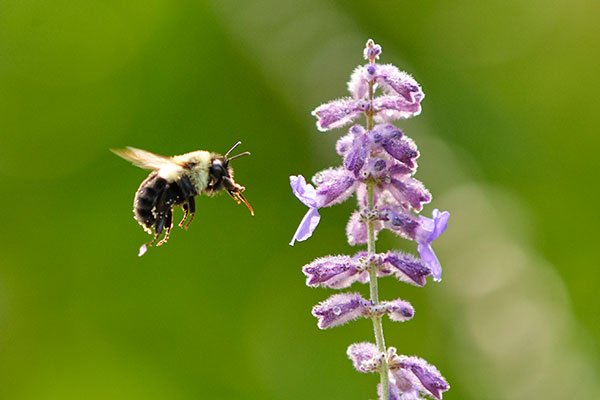
“Bees do have a smell, you know, and if they don't they should, for their feet are dusted with spices from a million flowers.” ― Ray Bradbury, Dandelion Wine
Who doesn’t take joy in watching Pollinators winging around a garden? Butterflies and moths flit from bloom to bloom. Dragonflies gathering the rays of the Sun. The buzzing sound of a nearby bee as it collects nectar. The fleeting presence of a hummingbird at your planters. With sharp declines in some of the Pollinator populations in recent years, Pollinators have become somewhat of a buzz word (see what I did there) - but let’s review their purpose.Pollinators are animals (primarily insects, but sometimes birds or even mammals) that fertilize plants and pollinate flowers, resulting in the formation of seeds and the fruit surrounding seeds. Humans and other animals rely on pollinators to produce nuts and fruits that are essential components of a healthy diet. Pollinators are necessary for three quarters of our food crops. While some plants and crops are pollinated by wind, the majority of flowering plant species found world-wide require animal-mediated pollination to make the seeds that will become the next generation of plants.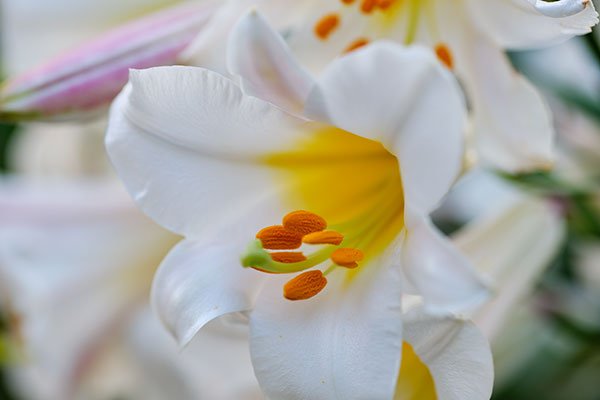 Pollination 101Without Pollinators- we wouldn’t have Flowers or FOOD for that matter! Bees, Butterflies, Dragonflies, Hummingbirds and even Bats- provide essential service in pollinating everything from Apples to Agavé - when you’re chowing down on your favorite fruit or vegetable- or arranging or smelling your favorite flower- You can thank a Pollinator!When these helpful pollinators- venture inside a flower- they help flowers produce fruit, create seeds, or allow flowers to multiply or even cross pollinate to create stronger or better plants.In this segment- of Life in Bloom- J looks inside a flower- and shares with us- how pollination occurs.
Pollination 101Without Pollinators- we wouldn’t have Flowers or FOOD for that matter! Bees, Butterflies, Dragonflies, Hummingbirds and even Bats- provide essential service in pollinating everything from Apples to Agavé - when you’re chowing down on your favorite fruit or vegetable- or arranging or smelling your favorite flower- You can thank a Pollinator!When these helpful pollinators- venture inside a flower- they help flowers produce fruit, create seeds, or allow flowers to multiply or even cross pollinate to create stronger or better plants.In this segment- of Life in Bloom- J looks inside a flower- and shares with us- how pollination occurs.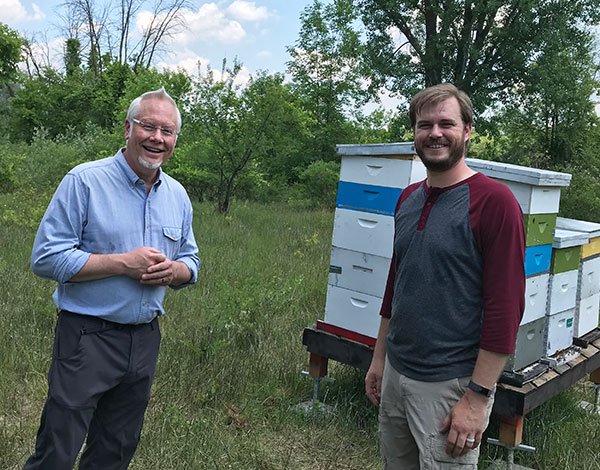 A Visit to Aberdeen Apiary (Filmed on JUNE 19, 2020)Local Honey is extremely desirable - not only for it's delicious flavor- but also for the health and wellness benefits that can be enjoyed from consuming honey that is produced in your Local Area. Local Honey is helpful in reducing allergies- and also has far reaching health and wellness benefits. In this episode of Life in Bloom- I wanted to learn more about truly LOCAL honey and contacted my friend - Jason Osbourn- the Bee Keeper- at Aberdeen Apiary- where Jason and a million of his bees- produce local Honey! I wanted to learn more- and Jason was kind enough to allow me and the film crew to learn more about Aberdeen Apiary and LOCAL Honey created by these amazing Pollinators!Learn More about my Friend Jason Osbourn- the Local Beekeeper- and Owner of Aberdeen Apiary here! Jason's Beehives are just a few miles from my home and garden- and Jason is as LOCAL as I can get- here in Grand Rapids- He allowed us to visit his bee hives- and hosted us - to tell us more about his local honey production- and offered this wise advise- when visiting a bee hive production with about a Million Bees- "Try Not to Act Like a Bear" - this was sage- albeit fun advice for me and the crew as we filmed these local pollinators!
A Visit to Aberdeen Apiary (Filmed on JUNE 19, 2020)Local Honey is extremely desirable - not only for it's delicious flavor- but also for the health and wellness benefits that can be enjoyed from consuming honey that is produced in your Local Area. Local Honey is helpful in reducing allergies- and also has far reaching health and wellness benefits. In this episode of Life in Bloom- I wanted to learn more about truly LOCAL honey and contacted my friend - Jason Osbourn- the Bee Keeper- at Aberdeen Apiary- where Jason and a million of his bees- produce local Honey! I wanted to learn more- and Jason was kind enough to allow me and the film crew to learn more about Aberdeen Apiary and LOCAL Honey created by these amazing Pollinators!Learn More about my Friend Jason Osbourn- the Local Beekeeper- and Owner of Aberdeen Apiary here! Jason's Beehives are just a few miles from my home and garden- and Jason is as LOCAL as I can get- here in Grand Rapids- He allowed us to visit his bee hives- and hosted us - to tell us more about his local honey production- and offered this wise advise- when visiting a bee hive production with about a Million Bees- "Try Not to Act Like a Bear" - this was sage- albeit fun advice for me and the crew as we filmed these local pollinators!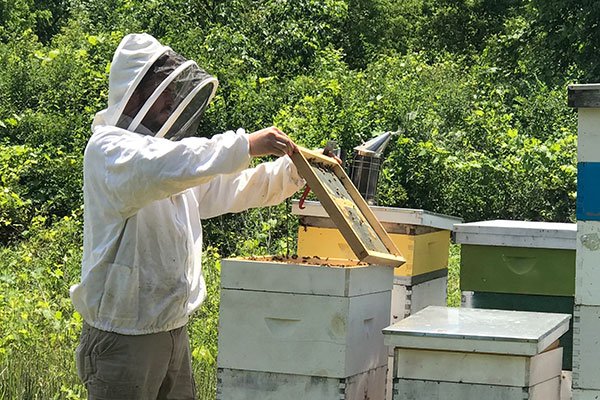 If you're like me- and constantly interested in LOCAL HONEY- you can purchase Local Honey in your area- or reach out to Jason for some of his Local Honey! Visit his website- www.AberdeenApiary.com- and learn more about his Local Honey- and Pollinator process... and much more!Contact Jason- for more information or to inquire about his local honey supply and availability at Aberdeenapiary@gmail.com - Be sure to Follow Aberdeen Apiary on Facebook at this link We had an amazing time- and got up close and personal with the Aberdeen Apiary Bees- Special thanks to Jason and his family for the Incredible tour- and Amazing Beekeeper Advice- NO One was stung- during our visit- and Jason taught us so much! By the way- the Honey is Truly Spectacular- as is often my observation- when you are doing what you love- with Love and Kindness- somehow- it's Just that much more Special (and Delicious)!
If you're like me- and constantly interested in LOCAL HONEY- you can purchase Local Honey in your area- or reach out to Jason for some of his Local Honey! Visit his website- www.AberdeenApiary.com- and learn more about his Local Honey- and Pollinator process... and much more!Contact Jason- for more information or to inquire about his local honey supply and availability at Aberdeenapiary@gmail.com - Be sure to Follow Aberdeen Apiary on Facebook at this link We had an amazing time- and got up close and personal with the Aberdeen Apiary Bees- Special thanks to Jason and his family for the Incredible tour- and Amazing Beekeeper Advice- NO One was stung- during our visit- and Jason taught us so much! By the way- the Honey is Truly Spectacular- as is often my observation- when you are doing what you love- with Love and Kindness- somehow- it's Just that much more Special (and Delicious)!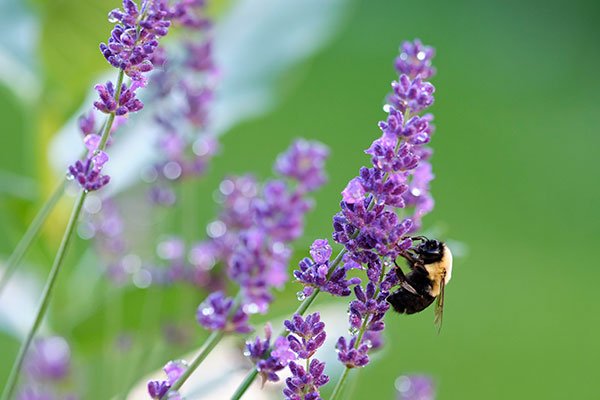 Three Ways to Support Bee Pollinators Understanding the importance of Pollinators and with the growing awareness of their population decline, I wanted to share some simple ways to support pollinators in your home garden.Bee Watering StationI share how to create a Bee Watering Station in the Yard... simply by using some Marbles or rocks in a tray. These marbles provide a place for the bees (and other pollinators) to land- and drink the water without falling in and drowning. Simply set your tray or saucer of water with the marbles and stones in the garden... allow nature and the pollinators to enjoy!
Three Ways to Support Bee Pollinators Understanding the importance of Pollinators and with the growing awareness of their population decline, I wanted to share some simple ways to support pollinators in your home garden.Bee Watering StationI share how to create a Bee Watering Station in the Yard... simply by using some Marbles or rocks in a tray. These marbles provide a place for the bees (and other pollinators) to land- and drink the water without falling in and drowning. Simply set your tray or saucer of water with the marbles and stones in the garden... allow nature and the pollinators to enjoy!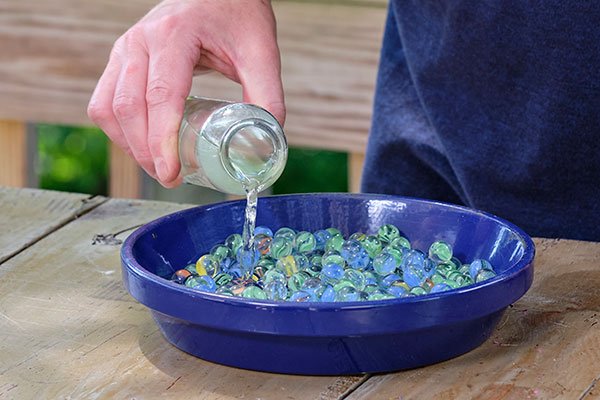 Biologists believe that bees probably find most of their water by scent rather than sight, so a water source with a smell will be more attractive. Water that smells like wet earth, moss, aquatic plants, worms, decomposition, or even chlorine, has a better chance of attracting a bee than sparkling water straight from the tap.The other thing bees like is a safe place to stand. Water in a steep-sided container or water that flows quickly is dangerous to a bee because they can easily drown. To solve this problem, beekeepers have devised all kinds of bee watering stations. A saucer filled with marbles or stones makes an excellent water station. Equally good is a bucket of water with plenty of “bee rafts.” These can be corks, sticks, sponges, or packing peanuts — anything that floats. If you are a gardener, you may have a hose with a slow leak or a drippy irrigation head that can be moved to a convenient location and allowed to seep into the ground. Others use hummingbird feeders filled with water or small ponds with lily pads.
Biologists believe that bees probably find most of their water by scent rather than sight, so a water source with a smell will be more attractive. Water that smells like wet earth, moss, aquatic plants, worms, decomposition, or even chlorine, has a better chance of attracting a bee than sparkling water straight from the tap.The other thing bees like is a safe place to stand. Water in a steep-sided container or water that flows quickly is dangerous to a bee because they can easily drown. To solve this problem, beekeepers have devised all kinds of bee watering stations. A saucer filled with marbles or stones makes an excellent water station. Equally good is a bucket of water with plenty of “bee rafts.” These can be corks, sticks, sponges, or packing peanuts — anything that floats. If you are a gardener, you may have a hose with a slow leak or a drippy irrigation head that can be moved to a convenient location and allowed to seep into the ground. Others use hummingbird feeders filled with water or small ponds with lily pads.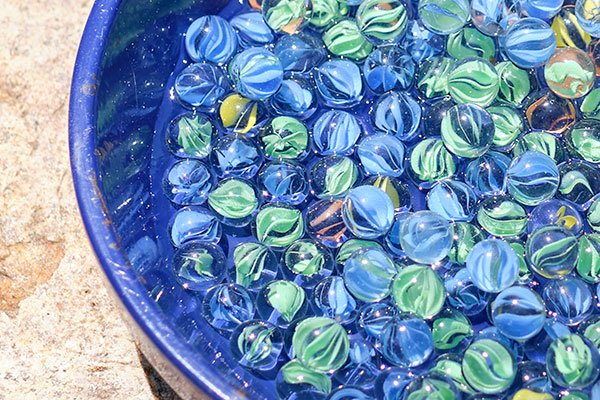 https://backyardbeekeeping.iamcountryside.com/health-pests/creating-the-best-water-sources-for-bees/A hive can consume anywhere from a quart to a gallon of water on a hot day. That is quite a lot of water. Bees are pretty smart and once they learn where water is they’ll continue to go to that site over and over. That means it’s important to keep your watering stations full. If they run dry the bees will find other water but it might not be where you want them to find water such as swimming pools and bird baths.
https://backyardbeekeeping.iamcountryside.com/health-pests/creating-the-best-water-sources-for-bees/A hive can consume anywhere from a quart to a gallon of water on a hot day. That is quite a lot of water. Bees are pretty smart and once they learn where water is they’ll continue to go to that site over and over. That means it’s important to keep your watering stations full. If they run dry the bees will find other water but it might not be where you want them to find water such as swimming pools and bird baths.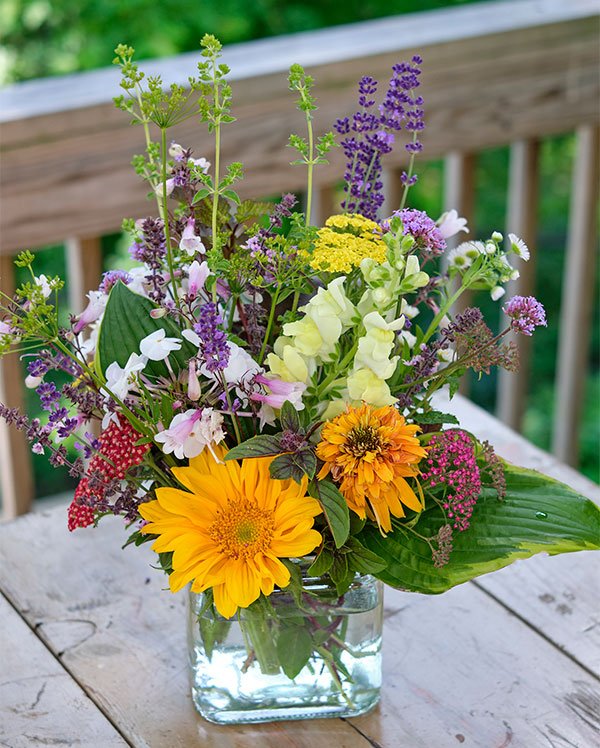 Plant Flowers and Trees that Pollinators LoveProvide Flowers that Bees Like… for example the Tall Purples (that are the featured flower in this episode of Life in Bloom), Lavender, Zinnias, Butterfly Bush, Echinacea - all provide wonderful pollination stations for bees and other pollinators. As Beekeeper Jason advised- planting an American Linden Tree in your yard- with provide an incredible amount of support for your local pollinator population. (Stay tuned for Season 4 of Life in Bloom- when I plant an American Linden in the Yard to support local pollinators!)Other suggestions include: large-leaved lupine, A. urticifolia, a flowering plant in the mint family, was the plant most strongly selected by three of five bumble bee species surveyed. Other commonly selected flowers included thick stem asters and Ryderberg's penstemon, a flower in the snapdragon family.here's a couple more resources for additional information:https://happydiyhome.com/butterfly-bush/https://thesouthern.com/lifestyles/home-and-garden/to-save-bumblebees-plant-these-flowers-in-your-yard/article_964e348f-3de8-598c-bb97-9ebbc203c5db.htmlBuild A Bee Hotel (or buy one)This is quickly becoming a wonderful way to support local pollinators- I continue to see lots of ideas popping up everywhere about creating your own "BEE HOTEL" - I share a purchased bee hotel in this segment- and also create one out of a simple wooden crate and bamboo!
Plant Flowers and Trees that Pollinators LoveProvide Flowers that Bees Like… for example the Tall Purples (that are the featured flower in this episode of Life in Bloom), Lavender, Zinnias, Butterfly Bush, Echinacea - all provide wonderful pollination stations for bees and other pollinators. As Beekeeper Jason advised- planting an American Linden Tree in your yard- with provide an incredible amount of support for your local pollinator population. (Stay tuned for Season 4 of Life in Bloom- when I plant an American Linden in the Yard to support local pollinators!)Other suggestions include: large-leaved lupine, A. urticifolia, a flowering plant in the mint family, was the plant most strongly selected by three of five bumble bee species surveyed. Other commonly selected flowers included thick stem asters and Ryderberg's penstemon, a flower in the snapdragon family.here's a couple more resources for additional information:https://happydiyhome.com/butterfly-bush/https://thesouthern.com/lifestyles/home-and-garden/to-save-bumblebees-plant-these-flowers-in-your-yard/article_964e348f-3de8-598c-bb97-9ebbc203c5db.htmlBuild A Bee Hotel (or buy one)This is quickly becoming a wonderful way to support local pollinators- I continue to see lots of ideas popping up everywhere about creating your own "BEE HOTEL" - I share a purchased bee hotel in this segment- and also create one out of a simple wooden crate and bamboo!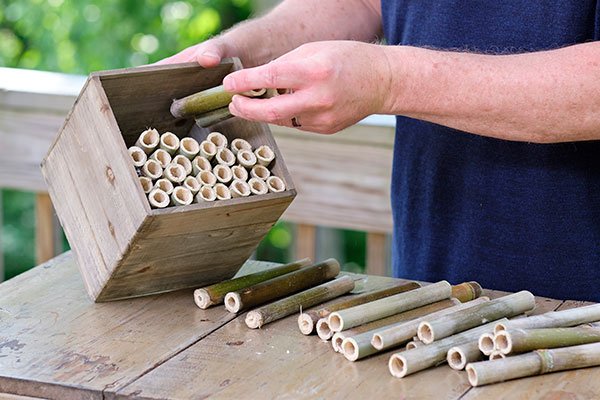 Included here - is additional that can help you purchase or create your own Pollinator Palace:https://realfarmacy.com/build-bee-hotels-to-help-save-native-bees/?fbclid=IwAR250Uu_pYHSklBAO9PnZhPugTN8vql0ijc6A9l7VxI9sYK-UvDBVzBIxjgPlant a Container Garden for Pollinators A Container Garden planted with pollinator friendly flowers is another idea for assisting Bees and other pollinators. Hummingbirds are another beautiful benefit to a container garden of flowers placed on a porch or a deck.Choose flowers that are pollinator friendly- your local Independent Nursery or Garden Center- can direct you to Pollinator Favorites- or may even have Local Native flowers that attract bees and other pollinators. Remember Bright colors help attract butterflies – and humming birds too. Place your container gardens where you can safely see and observe the pollinators in action... it's another great way to create your own Life in Bloom!Remember to dead head- removing spent blooms encourages your plants to keep blooming… this keeps new fresh flowers, nectar and vibrant colors coming all summer long. Deadheading is the way I start the day- during the Summer- It's relaxing and one of my favorite Life in Bloom activities!
Included here - is additional that can help you purchase or create your own Pollinator Palace:https://realfarmacy.com/build-bee-hotels-to-help-save-native-bees/?fbclid=IwAR250Uu_pYHSklBAO9PnZhPugTN8vql0ijc6A9l7VxI9sYK-UvDBVzBIxjgPlant a Container Garden for Pollinators A Container Garden planted with pollinator friendly flowers is another idea for assisting Bees and other pollinators. Hummingbirds are another beautiful benefit to a container garden of flowers placed on a porch or a deck.Choose flowers that are pollinator friendly- your local Independent Nursery or Garden Center- can direct you to Pollinator Favorites- or may even have Local Native flowers that attract bees and other pollinators. Remember Bright colors help attract butterflies – and humming birds too. Place your container gardens where you can safely see and observe the pollinators in action... it's another great way to create your own Life in Bloom!Remember to dead head- removing spent blooms encourages your plants to keep blooming… this keeps new fresh flowers, nectar and vibrant colors coming all summer long. Deadheading is the way I start the day- during the Summer- It's relaxing and one of my favorite Life in Bloom activities!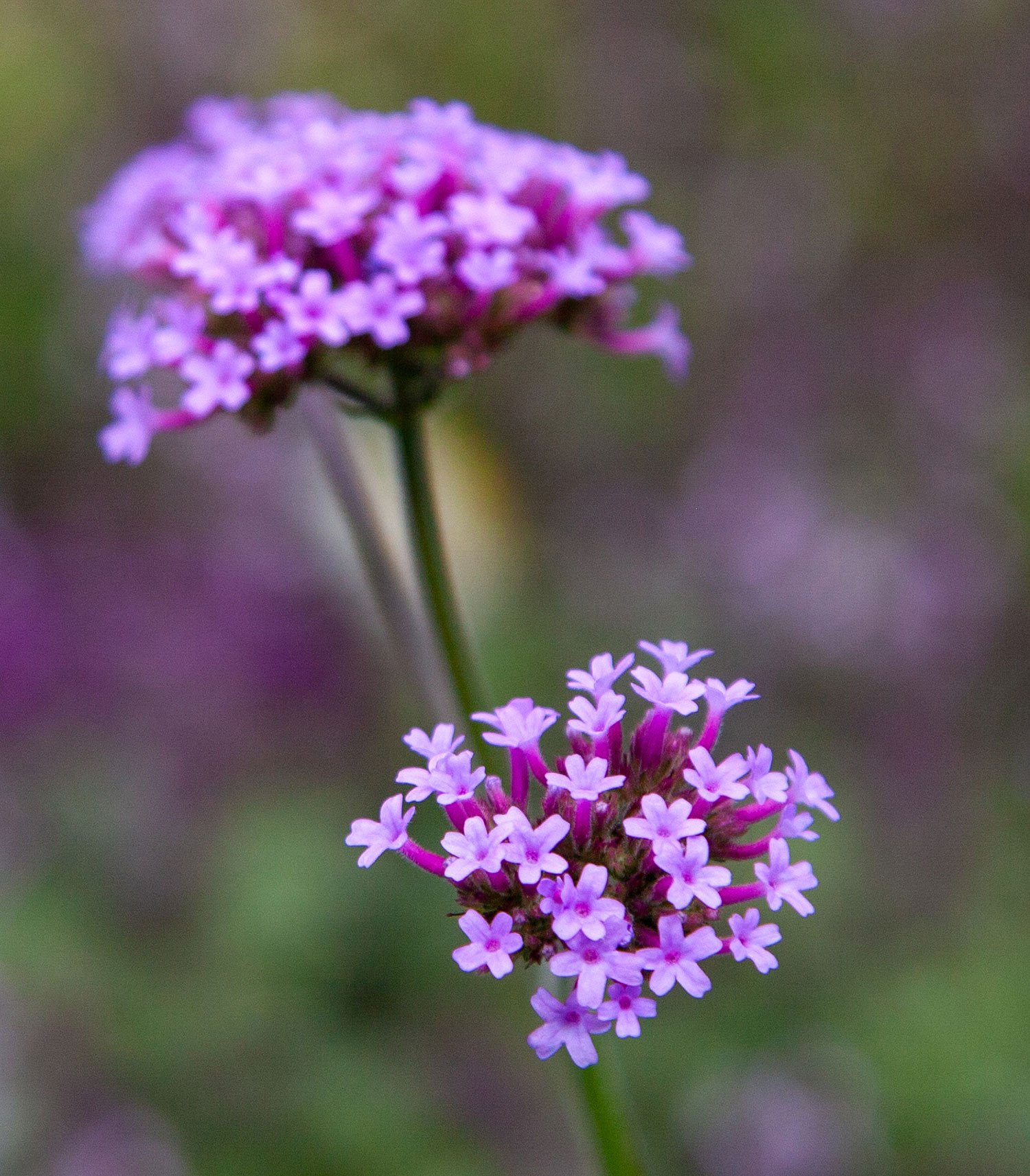 Featured Flower: Tall Purples - Vebena Bonariensis is commonly known as Tall Purples, Purple Top or Brazillian Verbena.- They attract Butterflies, bumble bees, commas, eastern tiger swallowtails, fritillaries, giant swallowtails, hairsteaks, honey bees, hummingbird moths, hummingbirds, painted ladies, red admirals, skippers, sulphurs, and more.- Tall Purples are fast growing in colder zones- Tall Purples are draught tolerant with below average water needs- They have a long blooming period which can be extended with deadheading- Native to tropical South America- Blooms are fragrant in lavender to rose-purple flowersHere's a few more links- that will provide additional information!https://monarchbutterflygarden.net/butterfly-plants/verbena-bonariensis/https://en.wikipedia.org/wiki/Verbena_bonariensisCreate a Garden Vase Arrangement with Pollinator Friendly FlowersRemember you pollinator friendly Flowers - don't have to be regulated to the Garden or Container Posts- You can harvest your pollinator friendly flowers- and create your own vase arrangement from your cutting garden. Placing your fresh cut flower arrangement- in your outdoor living area- will attract pollinators- the same as flowers in the garden do! Fresh cut Flowers- cut and arranged from the garden - will also attract lots of flower pollinators. Cut flowers are still useful to butterflies, moths and even bees, and attract them -even after harvesting. Place your arrangement on the deck or at your outdoor living area- to observe your local pollinator in action!
Featured Flower: Tall Purples - Vebena Bonariensis is commonly known as Tall Purples, Purple Top or Brazillian Verbena.- They attract Butterflies, bumble bees, commas, eastern tiger swallowtails, fritillaries, giant swallowtails, hairsteaks, honey bees, hummingbird moths, hummingbirds, painted ladies, red admirals, skippers, sulphurs, and more.- Tall Purples are fast growing in colder zones- Tall Purples are draught tolerant with below average water needs- They have a long blooming period which can be extended with deadheading- Native to tropical South America- Blooms are fragrant in lavender to rose-purple flowersHere's a few more links- that will provide additional information!https://monarchbutterflygarden.net/butterfly-plants/verbena-bonariensis/https://en.wikipedia.org/wiki/Verbena_bonariensisCreate a Garden Vase Arrangement with Pollinator Friendly FlowersRemember you pollinator friendly Flowers - don't have to be regulated to the Garden or Container Posts- You can harvest your pollinator friendly flowers- and create your own vase arrangement from your cutting garden. Placing your fresh cut flower arrangement- in your outdoor living area- will attract pollinators- the same as flowers in the garden do! Fresh cut Flowers- cut and arranged from the garden - will also attract lots of flower pollinators. Cut flowers are still useful to butterflies, moths and even bees, and attract them -even after harvesting. Place your arrangement on the deck or at your outdoor living area- to observe your local pollinator in action!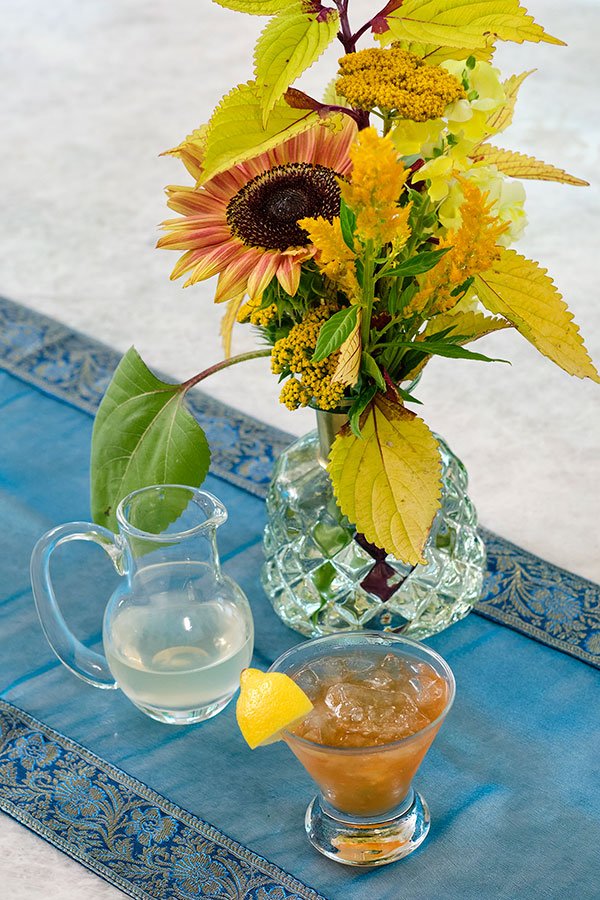 Queen Bee Cocktail- #FlowerCocktailHour Honey is an appropriate ingredient for this week’s flower cocktail, the Queen Bee.Ingredients List1½ oz. bourbon¾ oz. Amontillado sherry¾ oz. thyme-honey syrup¼ oz. fresh lemon juice1 dash Angostura bittersSimple syrup (1:1 proportion) to tasteTools: shaker, strainerGlass: punch or coupeGarnish: thyme sprig or other flowering herbDirections:Combine the ingredients in a shaker with ice and shake until chilled.Strain into a glass over crushed ice.Garnish with Thyme sprig.Here's a quick recipe for an Herb Infused Simple SyrupIngredientsThyme-Honey Syrup
1 cup hot water1 cup honey5 sprigs of thymeDirectionsSteep the thyme in hot water for 15 minutes.Stir in the honey.Strain the thyme out of mixture, then store in the refrigerator for up to 2 weeks.
Queen Bee Cocktail- #FlowerCocktailHour Honey is an appropriate ingredient for this week’s flower cocktail, the Queen Bee.Ingredients List1½ oz. bourbon¾ oz. Amontillado sherry¾ oz. thyme-honey syrup¼ oz. fresh lemon juice1 dash Angostura bittersSimple syrup (1:1 proportion) to tasteTools: shaker, strainerGlass: punch or coupeGarnish: thyme sprig or other flowering herbDirections:Combine the ingredients in a shaker with ice and shake until chilled.Strain into a glass over crushed ice.Garnish with Thyme sprig.Here's a quick recipe for an Herb Infused Simple SyrupIngredientsThyme-Honey Syrup
1 cup hot water1 cup honey5 sprigs of thymeDirectionsSteep the thyme in hot water for 15 minutes.Stir in the honey.Strain the thyme out of mixture, then store in the refrigerator for up to 2 weeks.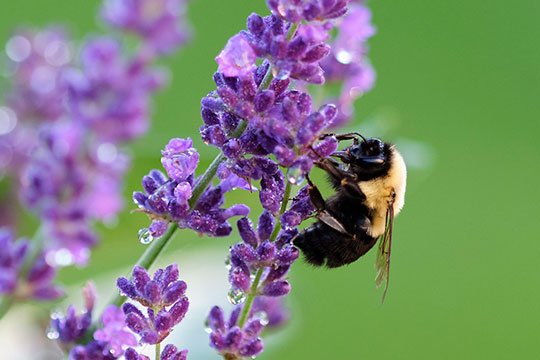 Encouraging Flowers to Bloom FASTER- BEE Bites! https://beemission.com/blogs/news/bumblebees-bite-flower-leaves-to-make-flowers-bloomBumblebees are waking up hungry and emerging from winter before flowers bloom, possibly due to climate change. It looks like they have devised a way to let plants know they are available and hungry. New research by a Swiss-led team reveals that bumblebees (Bombus terrestris) have been found to bite holes in flower leaves to make them bloom earlier. This may help both bee and plant adapt to climate changes.Mescher and his team noted that bumblebees bit chevron-shaped holes in plants but didn’t eat the leaves or carry the bits away. They pierced the leaves with their tongues, then cut holes with their mandibles. The team theorized that the bees were trying to make the plants flower earlier, since it is known that physical stress to a plant affects flowering.Wild bumblebees need a lot of nectar and pollen in the spring when they start to establish colonies. This study indicates that bees can trigger earlier flowering in plants by biting their leaves, which will provide more food and let plants know that pollination is available.Bees and flowers need each other. Bees need pollen and nectar to feed themselves, and flowers need pollination services which bees provide, so they can reproduce. Bees are behaviorally adapting to scarce food conditions as temperature change throws bee emergence and flowering out of sync. Scientists believes this mechanism can make flowers and bees more resilient to climate change.
Encouraging Flowers to Bloom FASTER- BEE Bites! https://beemission.com/blogs/news/bumblebees-bite-flower-leaves-to-make-flowers-bloomBumblebees are waking up hungry and emerging from winter before flowers bloom, possibly due to climate change. It looks like they have devised a way to let plants know they are available and hungry. New research by a Swiss-led team reveals that bumblebees (Bombus terrestris) have been found to bite holes in flower leaves to make them bloom earlier. This may help both bee and plant adapt to climate changes.Mescher and his team noted that bumblebees bit chevron-shaped holes in plants but didn’t eat the leaves or carry the bits away. They pierced the leaves with their tongues, then cut holes with their mandibles. The team theorized that the bees were trying to make the plants flower earlier, since it is known that physical stress to a plant affects flowering.Wild bumblebees need a lot of nectar and pollen in the spring when they start to establish colonies. This study indicates that bees can trigger earlier flowering in plants by biting their leaves, which will provide more food and let plants know that pollination is available.Bees and flowers need each other. Bees need pollen and nectar to feed themselves, and flowers need pollination services which bees provide, so they can reproduce. Bees are behaviorally adapting to scarce food conditions as temperature change throws bee emergence and flowering out of sync. Scientists believes this mechanism can make flowers and bees more resilient to climate change.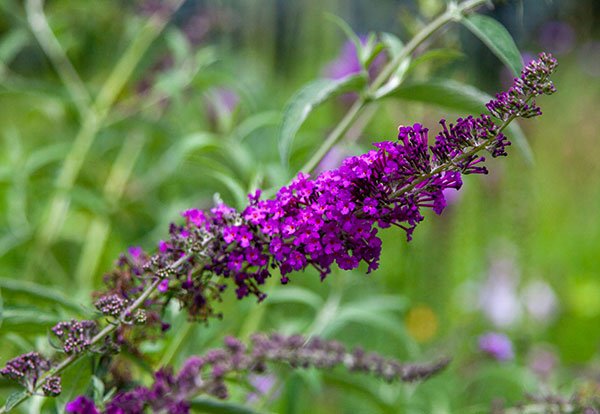 I hope this episode allows you to embrace Bees and other Pollinators for their helpful actions on behalf of all of us. There may be no better examples of living a Life In Bloom, until next time, I’m J Schwanke!
I hope this episode allows you to embrace Bees and other Pollinators for their helpful actions on behalf of all of us. There may be no better examples of living a Life In Bloom, until next time, I’m J Schwanke!

